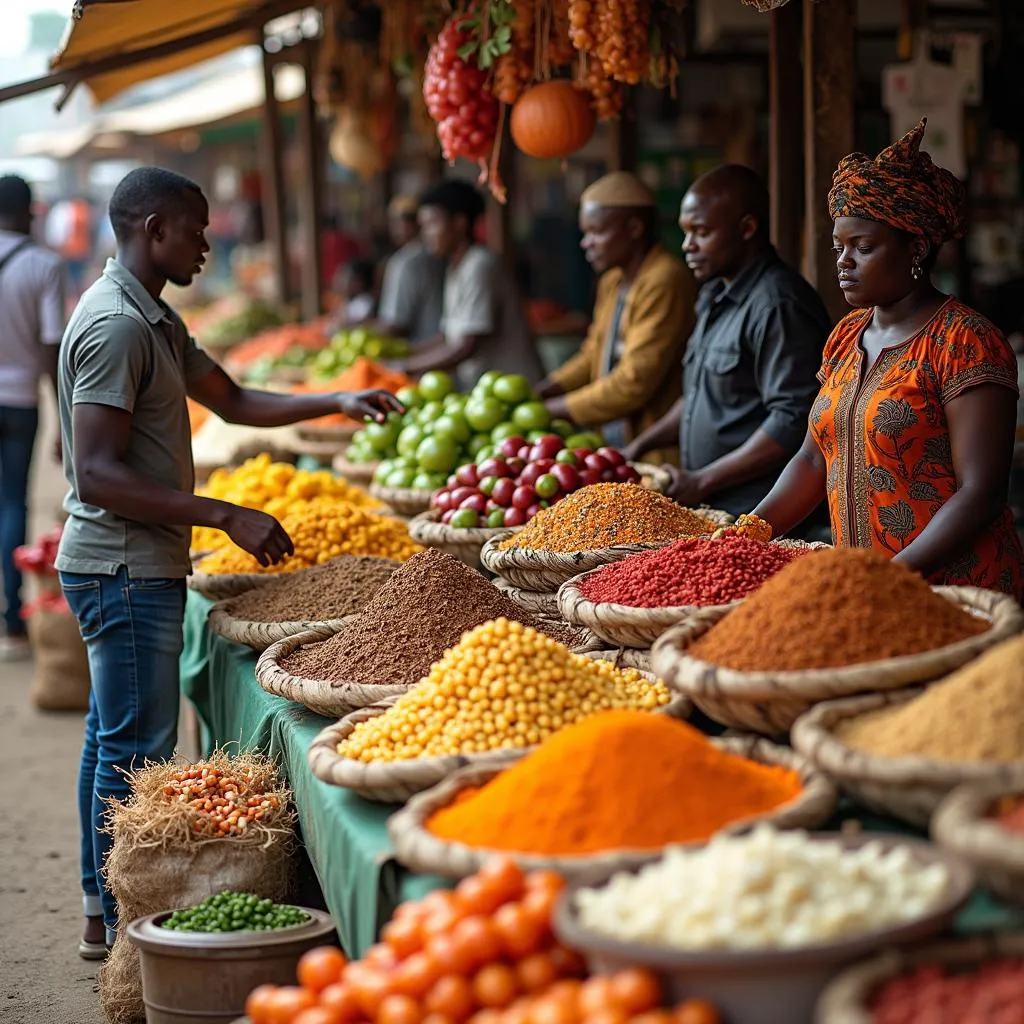The Vibrant and Energetic African Chamba Dance
The Chamba dance, a traditional African dance form, is a captivating and powerful expression of cultural heritage. Originating in the Bamileke region of Cameroon, it’s a dance that pulsates with rhythm and energy, showcasing the grace and skill of its performers. This vibrant dance, often accompanied by traditional instruments and songs, is not just entertainment but a deeply rooted tradition reflecting the values, beliefs, and history of the Bamileke people.
A Glimpse into Bamileke Culture
The Chamba dance holds a significant place in Bamileke culture, serving as a vital part of social gatherings, ceremonies, and celebrations. It’s a dance of storytelling, where intricate movements and elaborate costumes convey narratives about ancestors, historical events, and everyday life. The dance is a testament to the Bamileke people’s rich cultural heritage and their ability to express themselves through artistic means.
The Essence of the Chamba Dance
At its core, the Chamba dance is a celebration of life and a reflection of the community’s vibrant spirit. The dance’s movements are characterized by fluidity, precision, and a distinct elegance. The dancers’ movements, often punctuated by rhythmic stomps and graceful gestures, are a testament to the dedication and discipline required to master this art form.
Instruments and Music: The Heartbeat of the Dance
The Chamba dance is often accompanied by traditional instruments such as the balafon (a xylophone), ngombi (a type of harp), and drums. The melodies created by these instruments are intricate and captivating, setting the rhythm and mood for the dance. The music is an integral part of the experience, guiding the dancers and transporting the audience to a world of cultural richness and joy.
Costuming: A Symphony of Colors and Patterns
The costumes worn by Chamba dancers are equally impressive, often adorned with bright colors, intricate patterns, and symbolic motifs. These costumes are not just decorative but also convey messages and represent the dancers’ social status or roles within the community. The vibrant colors and elaborate designs of the costumes add to the visual spectacle of the dance, making it a captivating and unforgettable experience.
The Significance of the Chamba Dance
The Chamba dance goes beyond mere entertainment; it’s a crucial element of Bamileke cultural identity. It serves as a platform for:
- Storytelling: The dance’s movements and costumes often tell stories about ancestors, historical events, or societal values.
- Social cohesion: The Chamba dance brings communities together, fostering a sense of unity and shared cultural identity.
- Religious practices: In some instances, the Chamba dance plays a role in religious rituals and ceremonies, connecting the community to their spiritual beliefs.
“The Chamba dance is a living testament to the creativity and resilience of the Bamileke people,” says Dr. Amina Sow, an anthropologist specializing in African cultural studies.
The Chamba Dance Today
Despite the passage of time, the Chamba dance continues to thrive in Cameroon and beyond. It’s a tradition that has been passed down through generations, with young dancers eager to learn the intricacies of this art form. The dance has also gained recognition globally, captivating audiences with its energy, grace, and cultural significance.
Frequently Asked Questions
Q: Where is the Chamba dance performed?
A: The Chamba dance is primarily performed in the Bamileke region of Cameroon, but it’s also gaining popularity in other parts of the country and internationally.
Q: What is the purpose of the Chamba dance?
A: The Chamba dance is performed for various purposes, including celebrations, ceremonies, storytelling, and entertainment.
Q: What are the instruments used in the Chamba dance?
A: The Chamba dance is usually accompanied by traditional instruments such as the balafon, ngombi, and drums.
Q: What is the significance of the costumes worn in the Chamba dance?
A: The costumes worn by Chamba dancers are elaborately designed and often symbolize social status, roles, and cultural narratives.
Q: Is the Chamba dance a dying tradition?
A: The Chamba dance is a living tradition, with younger generations actively learning and participating in this art form.
Q: Where can I experience the Chamba dance?
A: You can experience the Chamba dance in Bamileke communities in Cameroon, as well as at cultural festivals and events around the world.
The Chamba dance is more than just a performance; it’s a window into the vibrant world of Bamileke culture. Its rhythm, energy, and stories continue to inspire and captivate audiences, ensuring that this tradition remains an essential part of African heritage.
